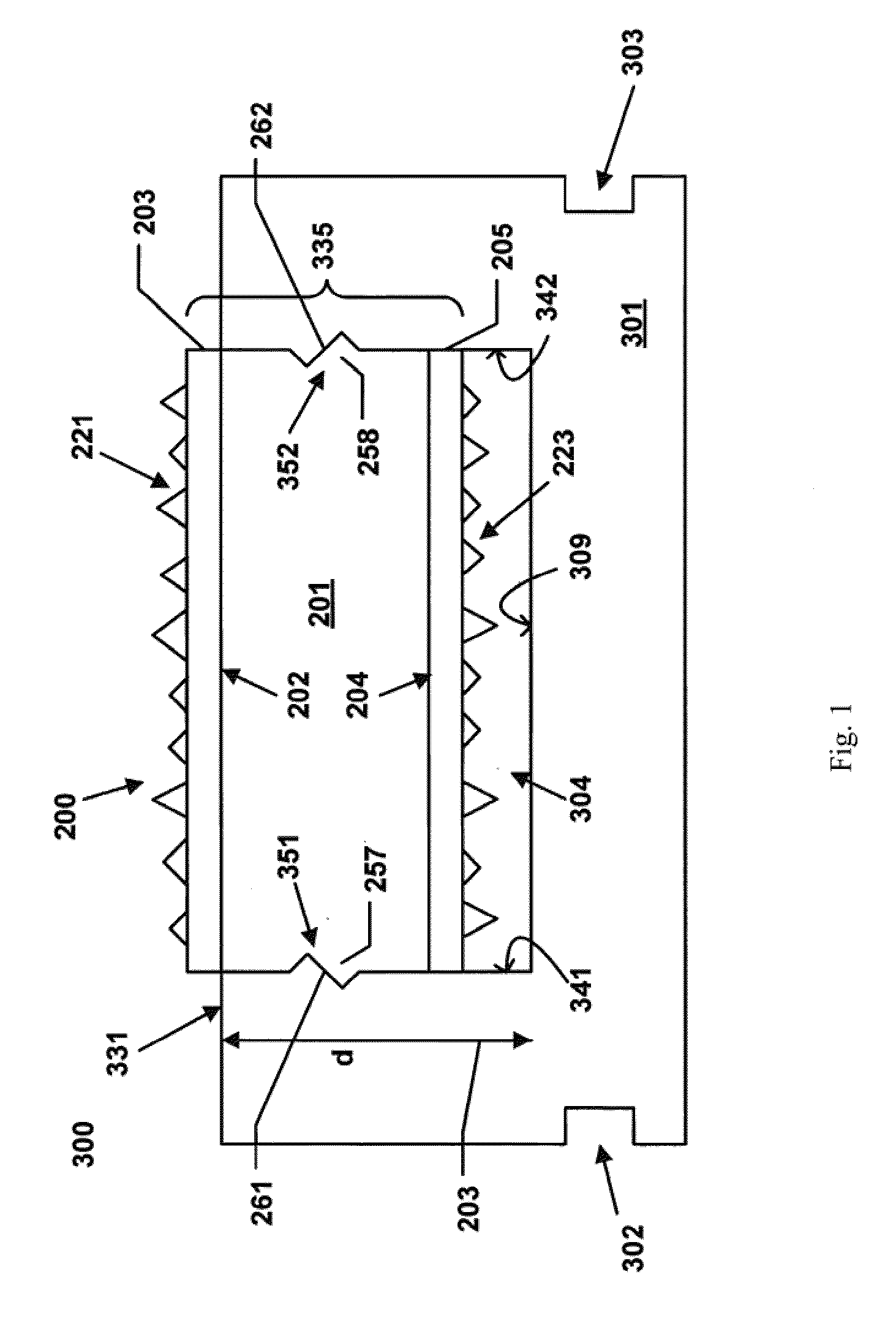Corrosion-Resistant CMP Conditioning Tools and Methods for Making and Using Same
a technology of abrasive surface conditioning and a conditioning tool, which is applied in the field of corrosion-resistant cmp conditioning tools and methods for making and using same, can solve the problems of accelerating the corrosion process, affecting the performance of the dresser, so as to reduce or minimize the accumulation of cmp residue and the formation of tribological, the effect of minimizing metal contamination and minimizing the accumulation of residu
- Summary
- Abstract
- Description
- Claims
- Application Information
AI Technical Summary
Benefits of technology
Problems solved by technology
Method used
Image
Examples
example 1
[0111]Tests were conducted to assess leaching levels for Ni and Cr. It was found that these levels were significantly reduced in a hydrophobic CMP dresser according to embodiments of the invention, compared to a CMP dresser that did not include a F-DNC coating. Results showing the elemental leaching, in microgram / ml (ppm) for a tungsten slurry, after seven days of soaking, are presented in Table 1 below.
TABLE 1Elemental leaching W slurry (after 7 days soaking)UncoatedDresserF-doped DNC dresserSample ID(7 days)(7 days)AgAl0.11AuCa0.75Cr13.82.1Cu0.250.17Fe12654K0.60.4LiMg1.060.55Na0.09Ni32648Zn2.010.23Unit: microgram / ml (ppm)
example 2
[0112]A hydrophobic F-DNC coating having a thickness of 2.5 μm was deposited on a working surface of a CMP dresser made on 430 stainless steel with diamonds in the size range of 65 μm to 85 μm. The coating had a contact angle of about 108°, as measured using a DSA 100 Drop shape Analysis System from Kruss GmbH, Hamburg, Germany. The data are presented in FIG. 5.
[0113]In another example, the contact angle measured was 105°.
example 3
[0114]A tool included an abrasive article with two working surfaces and a plate (holder) as described herein. A DLC coating was applied on both working surfaces. The coating had a thickness of 1.5 micron (+ / −10%). The tool exhibited reduced chemical leaching when compared with traditional brazed or sintered CMP dresser products. The tool can be used in both metal, such as, for instance, Cu and / or W, as well as in oxide, e.g., Interlayer Dielectric (ILD) or Shallow Trench Isolation (STI) CMP environments.
PUM
| Property | Measurement | Unit |
|---|---|---|
| thickness | aaaaa | aaaaa |
| contact angle | aaaaa | aaaaa |
| out-of-flatness | aaaaa | aaaaa |
Abstract
Description
Claims
Application Information
 Login to View More
Login to View More - R&D
- Intellectual Property
- Life Sciences
- Materials
- Tech Scout
- Unparalleled Data Quality
- Higher Quality Content
- 60% Fewer Hallucinations
Browse by: Latest US Patents, China's latest patents, Technical Efficacy Thesaurus, Application Domain, Technology Topic, Popular Technical Reports.
© 2025 PatSnap. All rights reserved.Legal|Privacy policy|Modern Slavery Act Transparency Statement|Sitemap|About US| Contact US: help@patsnap.com



